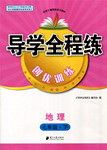题目内容
Ji Xianlin, a famous paleographer(古文书学家), historian, and writer, was born in 1911. In 1930, Ji was admitted to Tsinghua University as a major in Western literature. In 1935, he went to Germany as an exchange student to study ancient languages, receiving his PhD degree in 1941.
Ji returned to China in 1946, and in the autumn of the same year, became a professor in Peking University.
Ji Xianlin believes, “Cultural exchange is the main drive for humankind’s progress. Only by learning from each other’s strong points to make up for shortcomings can people constantly progress, the ultimate(最终的)target of which is to achieve a kind of Great Harmony. ” Over the past ten years, Ji has actively participated in discussions on the cultural problems between the East and the West, based on the same ideology. According to him, human culture is divided into four parts: Chinese culture, Indian culture, Arabic-Islamic culture and European-American culture, with the former three making up the Eastern cultural system and the last the Western one.
With his achievements in the history of Sino-Indian cultural relations, Buddhism history, Indian literature, and comparative literature, Ji Xianlin is known as a master of Eastern studies both at home and abroad.
1. What is the main idea of the passage?
A. The brief introduction of Ji Xianlin.
B. Ji Xianlin’s ideology.
C. Ji Xianlin’s achievements.
D. Ji Xianlin’s discussions on the cultural problems between the East and the West.
2. Which of the following statements is TRUE according to the passage?
A. In 1930, Ji was admitted to Tsinghua University as a major in Eastern literature.
B. The ultimate target of cultural exchange is to achieve a kind of Great Harmony.
C. Ji Xianlin is a master of Western studies both at home and abroad.
D. Ji Xianlin received his PhD degree in 1935.
3. What does the underlined word in the second paragraph mean?
A. Decision. B. Measure. C. Support. D. Aim.
4. Which of the following is different from the others according to Ji Xianlin?
A. Chinese culture.
B. Indian culture.
C. Arabic-Islamic culture.
D. European-American culture.
1. 【解析】选A。考查文章的整体信息。B、C、D三项只是文中的一部分, 故A项正确。
2. 【解析】选B。细节理解题。由文中第二段前两句可知B项正确。
3. 【解析】选D。词义猜测题。根据上下文可知应翻译成“目的”。故D项正确。
4【解析】选D。由倒数第二段最后一句可知季羡林认为A、B、C三者都属于东方文化体系, 而D项属于西方文化体系, 故选D。

 导学全程练创优训练系列答案
导学全程练创优训练系列答案
| |||||||||||||||||||||||||||||||||||||||||||||||||||||||||||

